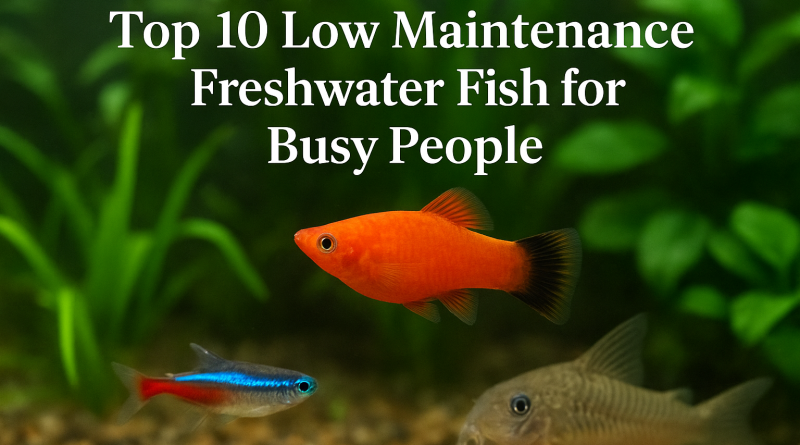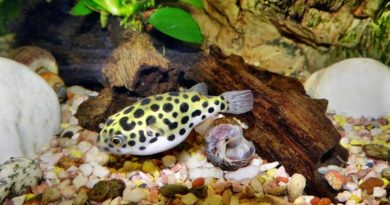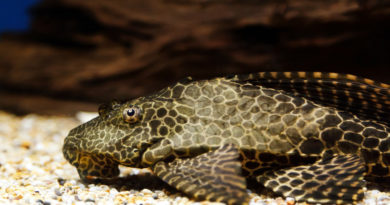Top 10 Low Maintenance Freshwater Fish for Busy People (Ideal for Small & Large Tanks)
Introduction
Ever thought of making an aquarium as a wish for your dream house? Do you have concerns about how much time and money it will cost to maintain such an active, lively environment?
We get it, life is busy and taking care of a fish tank for hours on end doesn’t necessarily fit into your schedule between work and the family. But here’s the good news: You don’t have to let running your freshwater aquarium become a second job.
This guide is for folks who love the idea of keeping fish and want it to be low-key, easygoing, and beginner-friendly. Whether you have a mini desktop tank or a 20-gallon setup in your living room, these fish require little attention to enjoy their presence.
Read on for our list of the 10 best low maintenance freshwater fish for busy people, those who have packed schedules but still want a lively underwater world.
What Makes a Fish Low-Maintenance?
Freshwater fish are not all the same. Many are sensitive to water changes, overly choosy eaters, or accident-prone. Others are pure survivors — flexible, stoneyard strong and comfortable with the essentials.
Here’s what we searched for: What I was looking for in a Beta Fish Care hardiness — Can take care of minor fluctuation in water conditions, simple diet — In-taking common flake or pellet food, peaceful temperament — No fighting or fin-nipping behaviour, no heater equipment (for some species), Minimal space requirements–Small tank compatibility
Let’s get to know some fish that tick all those boxes.
1. Betta Fish – The Unassuming Showstopper
- Tank Size: 5+ gallons
- Water Temp: 76–82°F (24–28°C)
- Care Level: Easy
- Heater Required: Yes

Betta fish are living art. Draped in flowing fins of sheer, iridescent color, they look high-maintenance but are themselves among the easiest fish to keep. They don’t require tank mates (in fact, male bettas like to be alone), and they can handle a small tank size.
Just keep their water warm, feed them good pellets every day. All your betta needs to thrive are a few live plants and a gentle filter.
2. Guppies – The Energetic Entertainers
- Size of tank: 10 gallons (for a small group)
- Water Temp: 72–78°F
- Care Level: Very Easy
- Heater Required: Optional

Guppies are colorful, swift, and packed with personality. They’re of the livebearer variety, so you will be seeing baby fish (which is fun, but I like to have a plan for population control).
They do well in small community tanks and will consume nearly any commercial food. And they’re really forgiving of small mistakes beginners tend to make.
3. Platies – Colorful and Undemanding
- Tank Size: 10+ gallons
- Water Temp: 70–78°F
- Care Level: Easy
- Heater Required: Optional
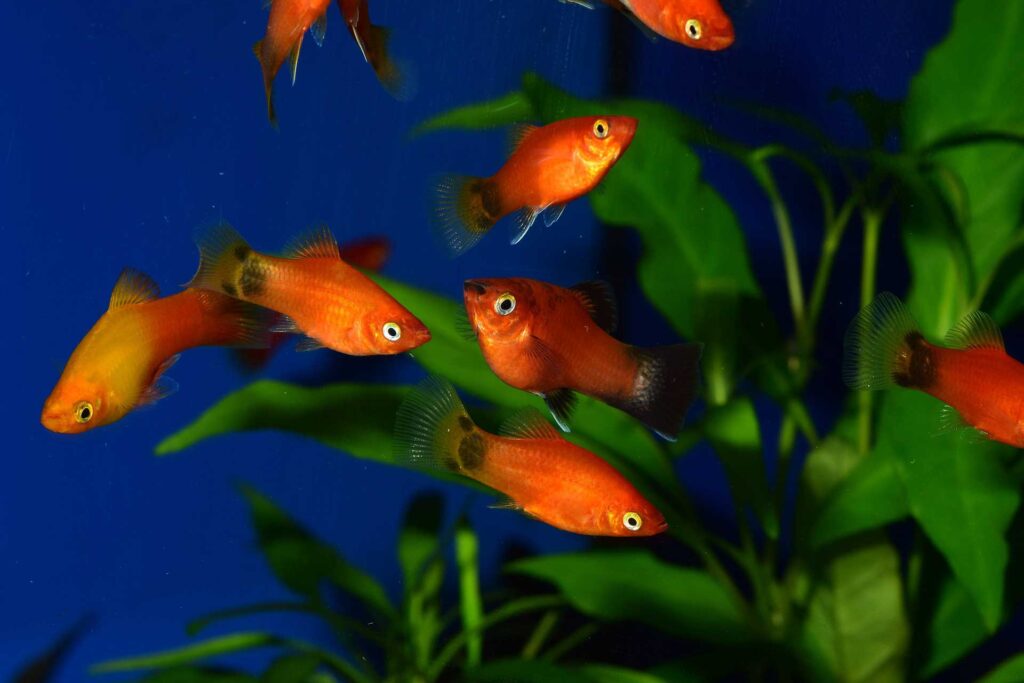
Platies are often underrated. They are gentle, they come in a rainbow of colors, and they don’t require anything fancy to be happy. You can keep at least 3-5 platies in a small tank harmoniously.
They’re ideal for beginners looking to make an impact with minimal effort.
4. Zebra Danios – Little Energizer Bunnies
- Tank Size: 10+ gallons
- Water Temp: 64–74°F
- Care Level: Very Easy
- Heater Required: No
Zebra danios are practically bulletproof. They can be kept in cooler water and are suitable for an unheated tank. These candy-cane striped fish are pure darting larks and do best in teams of five or more.
They’re quick swimmers, never seem to stop or slow down, and add a bit of energy to your tank with little maintenance.
5. White Cloud Mountain Minnows – The Cold-Water Wonders
- Tank Size: 10+ gallons
- Water Temp: 60–72°F
- Care Level: Easy
- Heater Required: No
These are true hidden gems. White clouds are peaceful, low-maintenance fish — they can even survive without a heater. They have a nice shine that is incredible in a planted tank.
Ideal for desktop and tabletop aquariums or low-tech set-ups.
6. Cherry Barbs – Low-Key Beauty
- Tank Size: 10+ gallons
- Water Temp: 73–81°F
- Care Level: Easy
- Heater Required: Yes
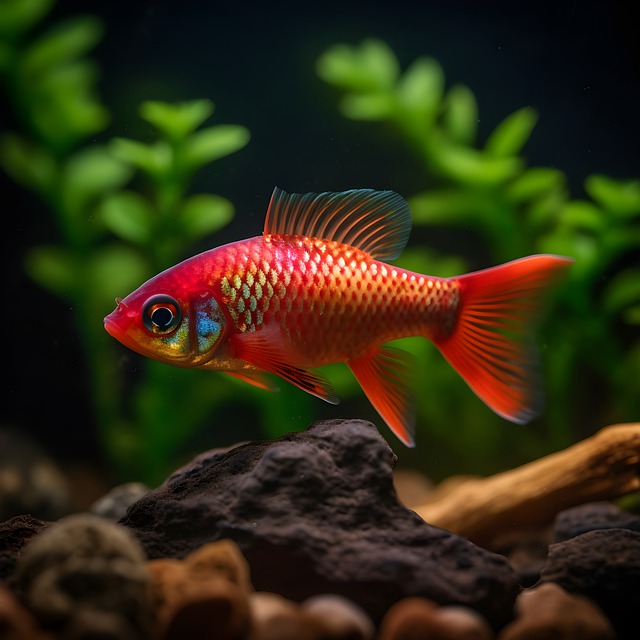
Cherry barbs are small, red or golden fish with a peaceful temperament. They do best in planted tanks and should be kept in a group of 5 or more for confidence.
They don’t whine for food or get into trouble — just peaceful beauty with low maintenance.
7. The Algae Cleaners – Bristlenose Plecos
- Tank Size: 20+ gallons
- Water Temp: 72–78°F
- Care Level: Easy
- Heater Required: Yes
Bristlenose plecos (4-5 inches). Unlike the giant common, bristlenose plecos remain relatively small by comparison. They eat algae off of glass and decor, saving you time on tank maintenance.
All you need to do is drop a sinking pellet and provide them with some driftwood to rasp on.
8. Pygmy Corydoras – The Tiny Clean-Up Crew
- Tank Size: 10+ gallons
- Water Temp: 72–78°F
- Care Level: Easy
- Heater Required: Yes
Pygmy corys are tiny, social bottom-dwellers that are just plain adorable. Keep them in a group of at least four, and you’ll see them zipping around the tank, picking up leftover food as they go. They’re peaceful, active, and perfect for beginners.
9. Nerite Snails – Nature’s Little Janitors
- Tank Size: 5+ gallons
- Water Temp: 72–78°F
- Care Level: Very Easy
- Heater Required: Optional
They’re not fish, but they definitely deserve a shout-out. Nerite snails are fantastic algae eaters and won’t multiply in freshwater, so no surprise snail invasion. They keep to themselves, don’t need special feeding, and do a great job keeping the tank glass clean.
10. Amano Shrimp – Silent Scavengers
- Tank Size: 5+ gallons
- Water Temp: 72–78°F
- Care Level: Easy
- Heater Required: Optional
Amano shrimp might be small, but they’re incredibly helpful. They snack on leftover food, nibble on algae, and get along well with peaceful fish. In a planted tank, they quietly keep things neat without you having to intervene.
How to Keep a Low-Maintenance Tank Low-Stress
Even the easiest fish still need a bit of attention. Here’s how to keep your tank running smoothly:
-
Do a 25% water change every 1–2 weeks
Use a siphon to clear out debris. Fresh water = happy, healthy fish. -
Don’t overfeed
Feed once a day and only what they can finish in about two minutes. Too much food just clouds the water. -
Test your water monthly
Use a liquid test kit to monitor ammonia, nitrite, and nitrate levels. -
Add live plants
Easy plants like Java fern or Anubias don’t need much light and help keep the tank balanced. -
Use a timer
Automate your lights so your tank follows a natural day-night cycle.
Common Mistakes You’ll Want to Avoid When Maintaining Your Fish Tank
Even though these beginner-friendly fish and invertebrates don’t demand much, there are a few pitfalls that can cause problems if you’re not careful. Here’s what new fish keepers most often get wrong—and how to steer clear of those headaches.
1. Skipping the Water Changes
It’s easy to assume that small tanks don’t need many water changes, but that’s actually when water changes matter most. In smaller aquariums, waste and uneaten food build up quickly, and the water quality can shift in just a few days. Regular water changes help keep your fish healthy, reduce algae, and prevent that cloudy “fish tank smell.” Think of it as routine housekeeping: quick, simple, and absolutely worth it.
2. Overstocking the Tank
It can be tempting to add “just one more fish,” especially when you want your tank to feel lively. But overcrowding leads to stress, aggression, and dirty water much faster than most beginners expect. Always double-check compatibility and start with fewer fish rather than more. Your fish will be happier, and your tank will be easier to manage.
3. Ignoring the Nitrogen Cycle
Many new hobbyists rush to add fish before their tank is ready, not realizing that an uncycled aquarium can lead to ammonia spikes that are dangerous—even deadly. Taking the time to cycle your tank first helps build the beneficial bacteria that keep the water safe. It’s a bit of patience that pays off massively in the long run.
4. Buying Cheap or Unreliable Equipment
A good heater and filter are the backbone of a healthy aquarium. While it’s tempting to save a few dollars, bargain equipment often breaks sooner, fluctuates in temperature, or simply doesn’t filter well. Investing in a quality filter and a heater with reliable temperature control will save you headaches, protect your fish, and keep your tank running smoothly.
Conclution
The idea of starting an aquarium can feel a little intimidating, but it really doesn’t have to be. Once you have a decent setup and a few hardy fish, most of the work becomes a simple routine. A well-planned tank tends to settle into its own rhythm, and you get to enjoy the colors, the movement, and the calm it brings without feeling tied to constant chores.
Some people fall in love with the quiet charm of a single betta. Others like the look of a tiny, peaceful community gliding around a planted tank. There’s no “right” choice—just whatever makes you smile when you walk by. These easy freshwater species are low-stress, forgiving, and perfect for anyone who wants the beauty of an aquarium without turning it into a full-time project.
In the end, a good aquarium isn’t about having the fanciest filter or spending hours scrubbing algae. It’s really about creating a little pocket of nature you can unwind with at the end of the day. Keep things simple, pick the fish you genuinely enjoy, and your tank will quietly reward you with a surprising amount of peace.

